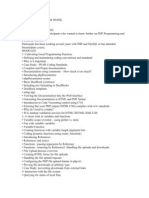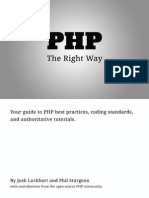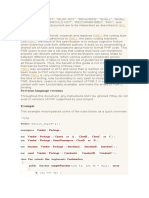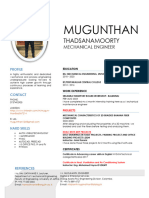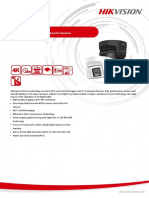0% found this document useful (0 votes)
72 views2 pagesPHP Rules and Best Practices
This document outlines essential PHP rules and best practices, including file structure, syntax, variable naming, and security measures. It emphasizes the importance of code organization, error handling, and testing while adhering to coding standards like PSR-1 and PSR-12. Additionally, it highlights the use of version control and environment configuration for secure and maintainable PHP applications.
Uploaded by
yassinbh1999Copyright
© © All Rights Reserved
We take content rights seriously. If you suspect this is your content, claim it here.
Available Formats
Download as PDF, TXT or read online on Scribd
0% found this document useful (0 votes)
72 views2 pagesPHP Rules and Best Practices
This document outlines essential PHP rules and best practices, including file structure, syntax, variable naming, and security measures. It emphasizes the importance of code organization, error handling, and testing while adhering to coding standards like PSR-1 and PSR-12. Additionally, it highlights the use of version control and environment configuration for secure and maintainable PHP applications.
Uploaded by
yassinbh1999Copyright
© © All Rights Reserved
We take content rights seriously. If you suspect this is your content, claim it here.
Available Formats
Download as PDF, TXT or read online on Scribd
/ 2





